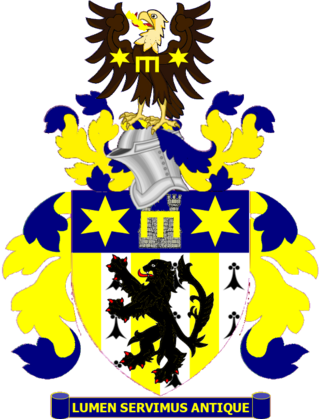
Sailing/Yachting made its first appearance as an Olympic sport at the 1900 Summer Olympics after competitions were cancelled at the 1896 Olympics. With the exception of 1904, sailing was thereafter always a part of the Olympic program. The sailing program in 1900 consisted of a total of eight sailing classes. For six classes, the races were scheduled from 20 – 27 May at the river Seine around Meulan, and several series of three races were held for the largest classes from 1–5 August on the North Atlantic off the coast of Le Havre. Approximately 150 sailors in 64 boats from 6 nations competed, including 1 woman, Hélène de Pourtalès, who won a gold medal in the 1 to 2 ton.
Sailing/Yachting is an Olympic sport starting from the Games of the 1st Olympiad. With the exception of the 1904 and the canceled 1916 Summer Olympics, sailing has always been included on the Olympic schedule. The Sailing program of 1908 was open for a total of five sailing classes (disciplines), but actually only four Sailing events were contested. The planned venue of all races, named matches, was Ryde, Isle of Wight.

Germany competed at the 1900 Summer Olympics in Paris, France.

The men's coxed four was one of the competitions in the Rowing at the 1900 Summer Olympics events in Paris. The competition was plagued by controversy involving which boats should advance to the final. In one of the most unusual decisions in Olympic history, two separate finals were held for the event, each of which is still considered an Olympic championship by the International Olympic Committee. The crews of all six boats to compete in the two finals are Olympic medallists.

France competed at the 1908 Summer Olympics in London, England.
The men's 4 × 200 metre freestyle relay, or 800 metre team race, was one of six swimming events on the Swimming at the 1908 Summer Olympics programme. It was the only relay event on the schedule, and the first appearance of the 4x200 in Olympic competition. Each nation could enter 1 team of 4 swimmers.
Thornycroft, Thorneycroft, or Thornicroft may refer to:

Great Britain, represented by the British Olympic Association (BOA), competed as the host nation of the 1908 Summer Olympics in London. The British Olympic Association was the National Olympic Committee responsible for organising the United Kingdom's representation. At the time British athletes competed under the team name "United Kingdom". The British team comprised 676 competitors.

Italy competed at the 1908 Summer Olympics in London, England. It was the third appearance of the European nation, which had not competed at the 1904 Summer Olympics. It was originally going to host the Games, but the eruption of Mount Vesuvius meant the UK hosted them.

Norway competed at the 1912 Summer Olympics in Stockholm, Sweden. 190 competitors, 188 men and 2 women, took part in 58 events in 14 sports.

Sailing/Yachting is an Olympic sport starting from the Games of the 1st Olympiad. With the exception of 1904 and the canceled 1916 Summer Olympics, sailing has always been included on the Olympic schedule. The Sailing program of 1972 consisted of a total of six sailing classes (disciplines). For each class seven races were scheduled from 29 August 1972 to 8 September 1972 of the coast of Kiel-Schilksee in the Bay of Kiel. Kiel hosted the Olympic sailing competitions for the second time, having previously done so during the 1936 Summer Olympics. The sailing was done on the triangular type Olympic courses.

Bernard Boverton Redwood was a British motorboat racer who competed in the 1908 Summer Olympics.
Isaac Thomas Thornycroft was an English motorboat racer who competed in the 1908 Summer Olympics representing Great Britain.

Ernest Blakelock Thubron, also known as Émile Thubron was an Anglo-French motorboat racer and an olympic champion. He was born in The Boldons, United Kingdom. He died in Tokomaru, New Zealand on 22 May 1927
The Class A (open class) was one of three motorboating classes contested on the Water motorsports at the 1908 Summer Olympics programme. Nations could enter up to 3 boats.
The Class B was one of three motorboating classes contested on the Water motorsports at the 1908 Summer Olympics programme. Nations could enter up to 3 boats. In addition to the 60 foot limit, boats were limited to "a total piston area not exceeding that represented by four cylinders each of 155 mm. bore."
The Class C was one of three motorboating classes contested on the Water motorsports at the 1908 Summer Olympics programme. Nations could enter up to 3 boats. In addition to the length minimum and maximum, the boats had to weight at least 800 kilograms, have "a total piston area not exceeding that represented by four cylinders each of 106 mm. bore," and "comply with the rules of the International Sporting Club of Monaco in regard to cruisers."
Over time, several scoring systems for Sailing were used during the Summer Olympics. Many of these systems were also used by other regattas in their times. In order to understand how the medals in the Olympics were handed out one must have a look at the scoring system of that specific olympic sailing regatta.
Water motorsport was on the Summer Olympic Games programme in 1900. These events have generally not been classified as official, although the IOC has never decided which events were "Olympic" and which were not. As with the official croquet events, some motorboating events satisfied three of four retrospective criteria — restriction to amateurs, open to all nations, open to all competitors and without handicapping. As with croquet, there were only French players. Motorboating was also included in the 1908 Olympic Games.
Sophia Hope Gorham (1881–1969) was a British motorboat racer who competed in the 1908 Summer Olympics. She is the only woman in Olympic history to compete in a motorboat event.












